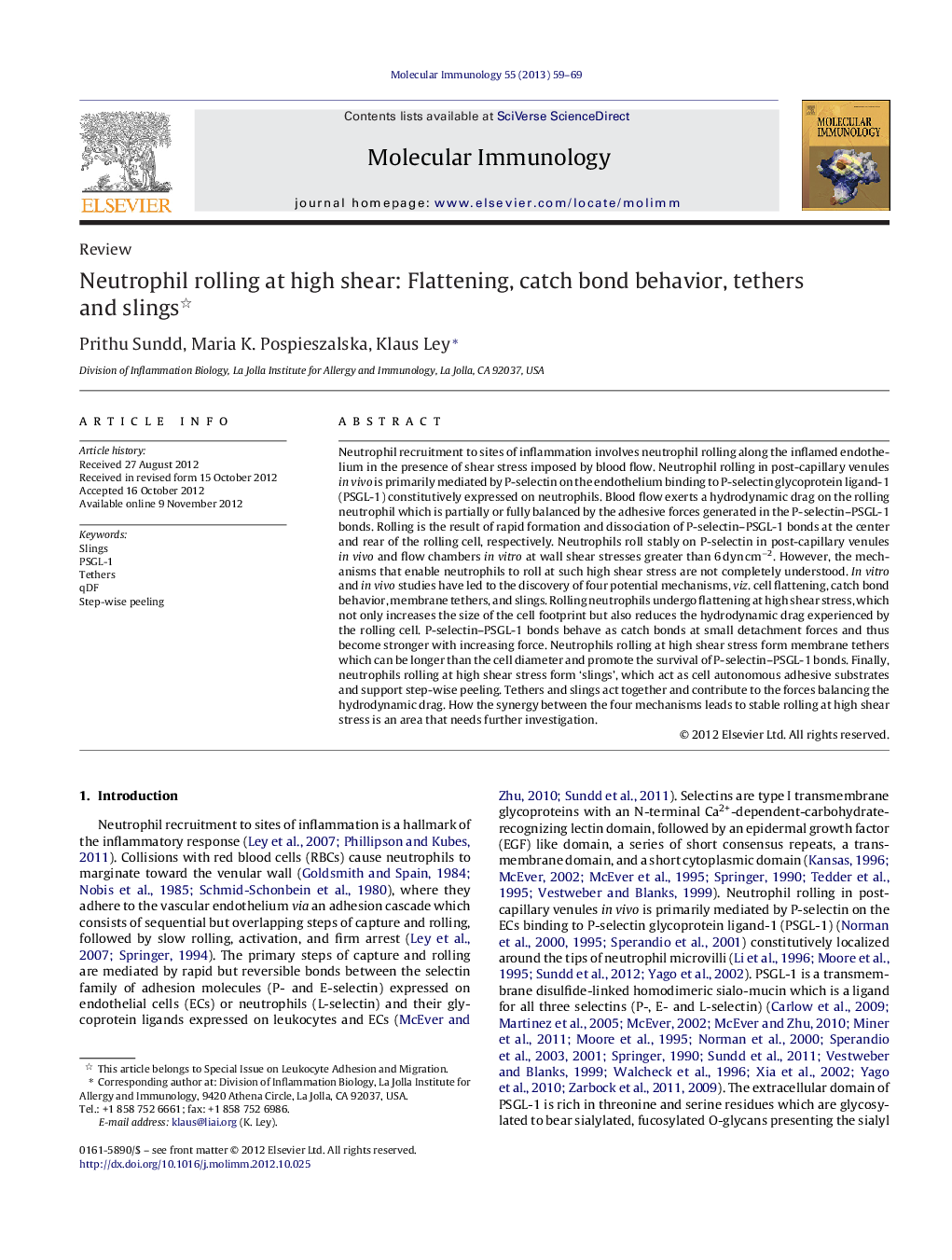| کد مقاله | کد نشریه | سال انتشار | مقاله انگلیسی | نسخه تمام متن |
|---|---|---|---|---|
| 2830904 | 1163771 | 2013 | 11 صفحه PDF | دانلود رایگان |

Neutrophil recruitment to sites of inflammation involves neutrophil rolling along the inflamed endothelium in the presence of shear stress imposed by blood flow. Neutrophil rolling in post-capillary venules in vivo is primarily mediated by P-selectin on the endothelium binding to P-selectin glycoprotein ligand-1 (PSGL-1) constitutively expressed on neutrophils. Blood flow exerts a hydrodynamic drag on the rolling neutrophil which is partially or fully balanced by the adhesive forces generated in the P-selectin–PSGL-1 bonds. Rolling is the result of rapid formation and dissociation of P-selectin–PSGL-1 bonds at the center and rear of the rolling cell, respectively. Neutrophils roll stably on P-selectin in post-capillary venules in vivo and flow chambers in vitro at wall shear stresses greater than 6 dyn cm−2. However, the mechanisms that enable neutrophils to roll at such high shear stress are not completely understood. In vitro and in vivo studies have led to the discovery of four potential mechanisms, viz. cell flattening, catch bond behavior, membrane tethers, and slings. Rolling neutrophils undergo flattening at high shear stress, which not only increases the size of the cell footprint but also reduces the hydrodynamic drag experienced by the rolling cell. P-selectin–PSGL-1 bonds behave as catch bonds at small detachment forces and thus become stronger with increasing force. Neutrophils rolling at high shear stress form membrane tethers which can be longer than the cell diameter and promote the survival of P-selectin–PSGL-1 bonds. Finally, neutrophils rolling at high shear stress form ‘slings’, which act as cell autonomous adhesive substrates and support step-wise peeling. Tethers and slings act together and contribute to the forces balancing the hydrodynamic drag. How the synergy between the four mechanisms leads to stable rolling at high shear stress is an area that needs further investigation.
► Neutrophils flatten against the substrate, thus increasing adhesion.
► While rolling, neutrophils form long tethers that favorably influence bond lifetimes.
► Selectin bonds with their glycoprotein ligands are catch-behaving bonds.
► Rolling neutrophils form slings, cell-autonomous-adhesive structures that stabilize rolling.
Journal: Molecular Immunology - Volume 55, Issue 1, August 2013, Pages 59–69